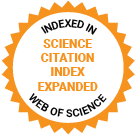Journal of Medical Internet Research
The leading peer-reviewed journal for digital medicine and health and health care in the internet age.
Editor-in-Chief:
Gunther Eysenbach, MD, MPH, FACMI, Founding Editor and Publisher; Adjunct Professor, School of Health Information Science, University of Victoria, Canada
Impact Factor 5.8 CiteScore 11.7
Recent Articles

The COVID-19 pandemic accelerated global telehealth adoption, prompting the South Korean government to temporarily legalize telemedicine in 2020 and subsequently launch a pilot program in 2023. As South Korea transitions to a postpandemic digital health environment, understanding the factors associated with willingness to use (WTU) and willingness to pay (WTP) for telemedicine and teleconsultation is essential for informing effective policy and service design. However, few studies have explored how preferences vary across clinical domains or user groups.


Disease-agnostic platforms (DAPs) are a digital health intervention (DHI) category that can support patients across multiple clinical conditions. While their versatility and configurability can address the fragmentation caused by condition-specific DHIs, DAPs present challenges for evaluation and certification, as they must be assessed across multiple therapeutic areas and diverse applications. A core challenge is identifying suitable evaluation frameworks that can accommodate the highly adaptable nature of this technology.


In the context of escalating global mental health challenges, adolescent suicide has become a critical public health concern. In current clinical practices, considerable challenges are encountered in the early identification of suicide risk, as traditional assessment tools demonstrate limited predictive accuracy. Recent advancements in machine learning (ML) present promising solutions for risk prediction. However, comprehensive evaluations of their efficacy in adolescent populations remain insufficient.

The design and integration of technology within inpatient hospital rooms has a critical role in supporting nursing workflows, enhancing provider experience, and improving patient care. As health care technology evolves, there is a need to design “future-proofed” physical environments that integrate technology in ways that support workflows and maintain clinical performance. Assessing how current technologies affect nursing workflows can help inform the development of these future environments.


Industry stakeholders, academic experts, and regulatory bodies emphasize the importance of prioritizing a patient-centered experience in clinical trials to enhance retention, adherence, and trial participation. Concurrently, there has been a notable rise in the adoption of technology-mediated decentralized methodologies for conducting clinical trials. Nonetheless, is a truly patient-centric approach being achieved? The shift to decentralized approaches risks prioritizing operational efficiency and remote data collection over the nuanced and diverse needs of participants. This raises critical questions about whether the current implementation of decentralized clinical trials (DCTs) fully aligns with the principles of patient centeredness.

Teaching is often characterized as a stressful profession, with a substantial proportion of teachers experiencing chronic stress and burnout. Research indicates that teachers often experience stress upon entering the workforce, leading to detrimental effects on their health, occupational well-being, and work performance and adversely impacting student outcomes. While meta-analyses have demonstrated the efficacy of internet-based stress management interventions (iSMIs) for both experienced professionals and university students, there remains a gap in research on the efficacy of iSMIs tailored to teachers and career starters.

Preprints Open for Peer-Review
Open Peer Review Period:
-
Open Peer Review Period:
-
Open Peer Review Period:
-
Open Peer Review Period:
-


















